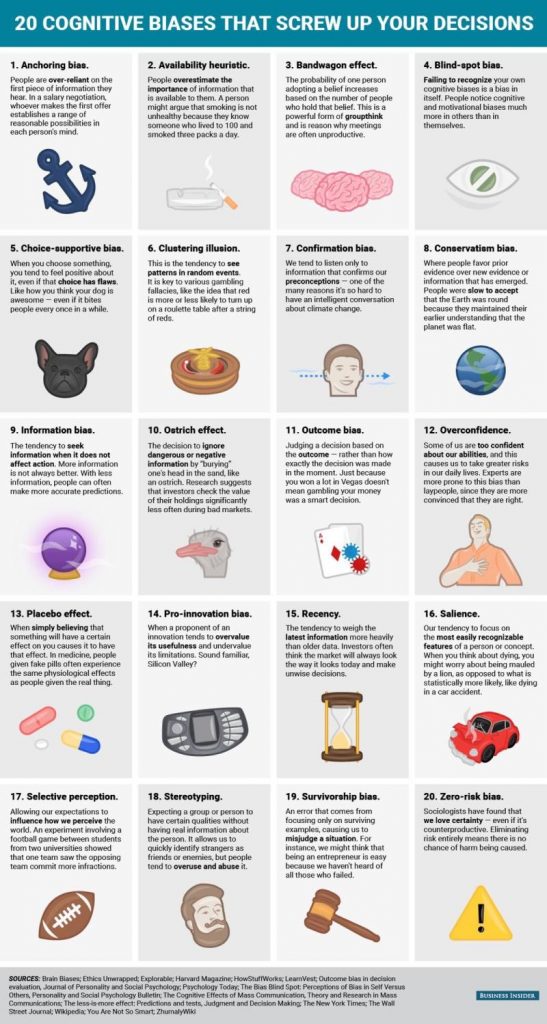What is analysis?
Many people analyse football matches. They do that for many different reasons. If you write a football analysis for entertainment than anything you write goes. But if you write to explain football or even better yet, a pro football club is using your analyses for match preparation or training programs to improve players, then it matters what you write. For one your analysis need to be correct. An incorrect analysis can’t explain how football works. Even worse an incorrect analysis can lead to the unnecessary loss of matches. An incorrect analysis can mean that the training staff give players the wrong suggestions for improvement. Another point is that a description is not an analysis. For that reason it is good to discriminate between match reports like the Guardian has, tactical match reports like Between The Post has and match analyses like Spielverlagerung has.
A good analysis also explains why it is unlikely that the outcome is due to happenstance. For every draw and every match with a goal difference of 1, it is hard to explain why the match ended in this result rather than another.
Here is an example of how to argue beyond happenstance:
“As isolated incidents, these can be forgiven as no team is 100% perfect defensively and all the defensive organisation in the world cannot always negate the attacking side. But for Borussia Dortmund these aren’t isolated incidents. Of their five goals conceded so far this season, three now have come via corners. Last season BVB conceded 19 goals from set-pieces- six from corners and six from free-kicks.”
That means that it pays to understand what an analysis entails. Now a philosophical analysis isn’t the same as a football analysis. Yet, the lessons philosophers learned about analysis equally apply to football. For instance, most people would think that analysis means that you break something down into its components. This is how analysis is used within football. Football analysis breaks a match down into components like formation, half spaces, tactics etcetera. This is what is called decompositional analysis within philosophy. Besides this form of analysis there are two other forms of analysis. So in total there are three forms of analysis:
- Decompositional analysis where you break things down into components.
- Regressive analysis where you work back to first principles.
- Transformative or interpretive analysis where you translate what you analyse first into something else, preferably logic.
Let me give you my regressive and transformative analysis of the football game itself as I published in my boek “Voetbalstatistiek: filosofie voor voetballers”. Football has rules. Philosophers love rules as they provide a syntax. A syntax makes it easy to find the first principles. Here are the first principles of football as an example of regressive analysis:
- Principle 1: the purpose of football is to win.
- Principle 2: you win football by scoring more goals than your opponent.
- Principle 3: the closer you get to the opponents goal the easier the bigger the chance becomes to score a goal.
From these three basic principles you can then derive rules like these:
- Rule 1: scoring goals is good.
- Rule 2: if scoring is good, then assisting is good.
- Rule 3: if assisting is good then increasing the chance for an assist is also good.
- Rule 4: if assisting is good then decreasing the chance for an assist is bad.
- Rule 5: if scoring is good, then failing to score is bad.
- Rule 6: conceding a goal is bad.
- Rule 7: if conceding a goal is bad, then preventing a goal is good.
- Rule 8: if conceding a goal is bad, then increasing the chance that the opponent scores is bad.
Now these principles and rules might come across as very obvious statements. But that is exactly the point. You want to build your analysis on such simplicity that nobody would argue against it. Furthermore, through the process of synthesis which is the opposite of analysis, you can combine these basic building blocks into more complex statements. Or with transformative or interpretive analysis you can translate these rules to actually football analysis.
So let’s look at an example:
What is the better strategy for football: having a lot of small chances to score or only a few big chances? In the end the only thing that matters is whether a team scored more goals than the opposite teams. If the team managed to do that by shooting a lot on the goal, then that turns out to be the best strategy for them at that time. Here you can see the reasoning behind: the winning manager is always right. Nevertheless, you can also look at multiple matches and then you see that if you fail to score a lot (rule 5) even though you win now and then, over the long run you are worse of. That is the reason why teams are using crosspasses less and less. Statistics shows that crosspasses lower the chances to score (rule 4). So in general it is better to have a few big chances than more small chances as rule 4 and 5 bite less in that case.
Of course you don’t have to agree with my line of reasoning. That is not the point. The point is to show how analysis is done. This is important because many times an analysis consists of nothing more than describing what has happened on the pitch. A description is not an analysis. Stating “Team A played in a 4-3-3 formation” is not an analysis. It is a description. It would turn into an analysis when one would state: “Team A played in a 4-3-3 formation because they played with 4 defenders, 3 midfielders and 3 strikers”. Then you are breaking the 4-3-3 formation into its components. Yet, most people would not feel that this would be a very good description as it is too obvious. So an even better analysis would be where you would use data, for instance heat maps, to proof that indeed the team played with three lines of players and the line closest to their own goal had four players and the other two lines had three players.
If you use your analysis to identify causes, then it is important to know which criticisms can be leveraged against talking about cause and effect. The safer option is to talk about the probability of a certain pattern in a match or a certain sequence of actions of a player repeating in the future.
Patterns of weak or empty analysis
Thanks to the writing guide for analyses of the University of Michigan, we have a nice list of seven patterns of weak or empty analysis:
- Offers a new fact or piece of evidence in place of analysis. This is done a lot in football analyses. They tend to be a long list of more and more data being presented with very little analysis of the previous presented data. As the University of Michigan writes: “Telling the reader what happens next or another new fact is not analysis.”
- Analysis is biased. There are a lot of implicit biases. For one statistics is counterintuitive. People draw conclusions from statistics that are wrong. Then there is confirmation bias. Information that supports your point of view reaches your conscious mind much easier than information that disproves your point. Finally we have survivor bias. Although there is a lot of confirmation bias in football. Survivor bias is even more rampant. With survivor bias you only look at the data of the football players who made it, without checking how many failed football players had the same data but did not make it.
- Analysis restates claim. This happens a lot in Twitter discussion where someone does not agree with what is being said. Then the original author gives arguments why he is right or why the opposing view is wrong. Finally, rather than engaging the arguments, the critic simply restates his point of view. Also don’t use a tautology in an analysis.
- Dismiss the relevance of the evidence. Here is an example from an actual dismissal of the relevance of the evidence: “The Union have quickly become the team in MLS that other teams should emulate. They’ve got the second best expected goal difference (xGD) per game. Though, in fairness,, the gap between them and LAFC in first is the same as the gap between them and the Columbus Crew, who currently sit 17th in MLS. But, in further fairness,their budget isn’t in the same stratosphere as LAFC, to say nothing of the teams they rank above likeAtlanta, Toronto, NYCFC, and the LA Galaxy.” Source.
- Strains logic. People often mistake their logical error with a disagreement of opinion. Such is not the case. While there is no absolute truth in our empirical world where there is only probability, there is absolute truth in logic and mathematics. If an analysts for instance prefers to use xG because even if the correlation of xG with future goals is low (say 27%), it is the best correlation we have, he violates the laws of mathematics that show how little information there is in a 27% correlation. That is not a difference of opinion, but a logical error. The same goes with faulty statistics. Although our empirical world is ruled by probability, probability itself is ruled by the logic of uncertainty. In the same way as mathematics is ruled by the logic of certainty.
- Generalization to arrive at the argument. There are many unfounded generalizations in football that are used to arrive at a certain conclusion. That is why a good analysis goes into great detail of the relevant data without adding more data to it as that would weaken the analysis as per our first point. So an analysis of team data without delving into the underlying player data for instance uses generalization to arrive at a conclusion. For example: In a player report I read, the consultancy firm was praising a central defender for being in the top 5% of the best defenders to support the attack because his goals per minute was very high. Then I looked in the underlying data. What was the case? This defender playing in the Premier League scored twice in the 16/17 season playing little more than 3000 minutes. Then in the 17/18 season he scored three times! And in just 2000 minutes played! That was a big boost for his goals per minute, but of course the underlying data demonstrated (a) that the difference between scoring two times or three times is pretty much a matter of happenstance and (b) that he played only 2000 minutes instead of 3000 minutes indicated that the manager did not appreciate him the way the consultancy firm concluded. This report was used to try and get this defender to play at a bigger club for a better salary and hefty transfer fee. But the generalizations were only used to reach a conclusion rather than support an analysis. The transfer did not happen and in the 18/19 season this defender only played 1000 minutes and did not score at all.
- Offers advice or a solution without first providing analysis. It is not to criticize StatsBomb as they do many wonderful things, it just happened that their analysis was the first that I saw in my Twitter feed. Nevertheless, there opening sentence of the piece quoted earlier is an excellent example of offering advice with first providing the analysis: “The Union have quickly become the team in MLS that other teams should emulate.”











